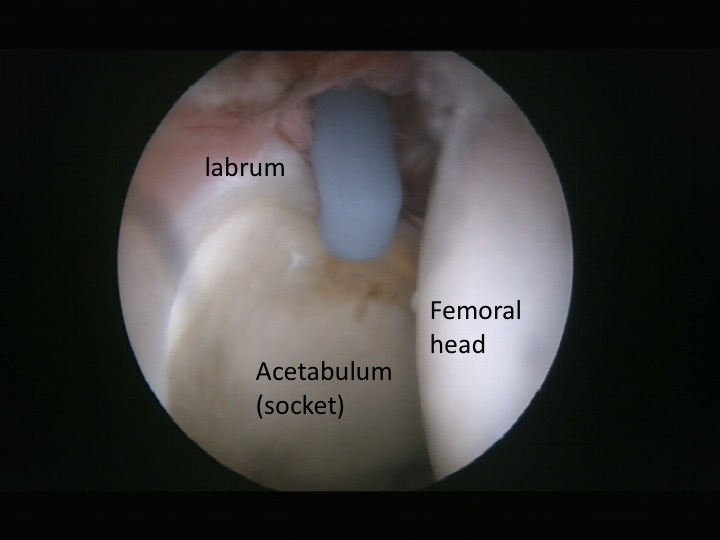
Hip Arthroscopy
 Arthroscopy utilises a small telescope to look inside a joint. This form of keyhole surgery has revolutionised the management of many conditions affecting the knee and shoulder. The hip joint is much deeper and more difficult to gain access to than many joints. However, over the last few years surgeons have managed to devise techniques by which this can be achieved. This means that the inside of the joint can now be visualised through small (1cm) wounds.
Arthroscopy utilises a small telescope to look inside a joint. This form of keyhole surgery has revolutionised the management of many conditions affecting the knee and shoulder. The hip joint is much deeper and more difficult to gain access to than many joints. However, over the last few years surgeons have managed to devise techniques by which this can be achieved. This means that the inside of the joint can now be visualised through small (1cm) wounds.
In order to perform hip arthroscopy the patients leg has to be distracted (stretched) to allow the instruments to be inserted into the joint. Patients will generally need to be kept in hospital for one night although some procedures can be performed as day cases. Scarring is minimised and rehabilitation is quicker than for standard hip operations.
Hip arthroscopy is useful for treating several conditions that affect the hip. These include labral tears, impingement, removal of loose bodies. In addition it enables an accurate assessment of the joint when joint preserving operations (osteotomies) are being considered as an alternative to joint replacement.
Unfortunately, if there is any arthritis within the joint arthroscopy will not cure this although it may alleviate symptoms if very early. Significant arthritis will be visible on an ordinary X ray and arthroscopy should not be considered if this is the case.
